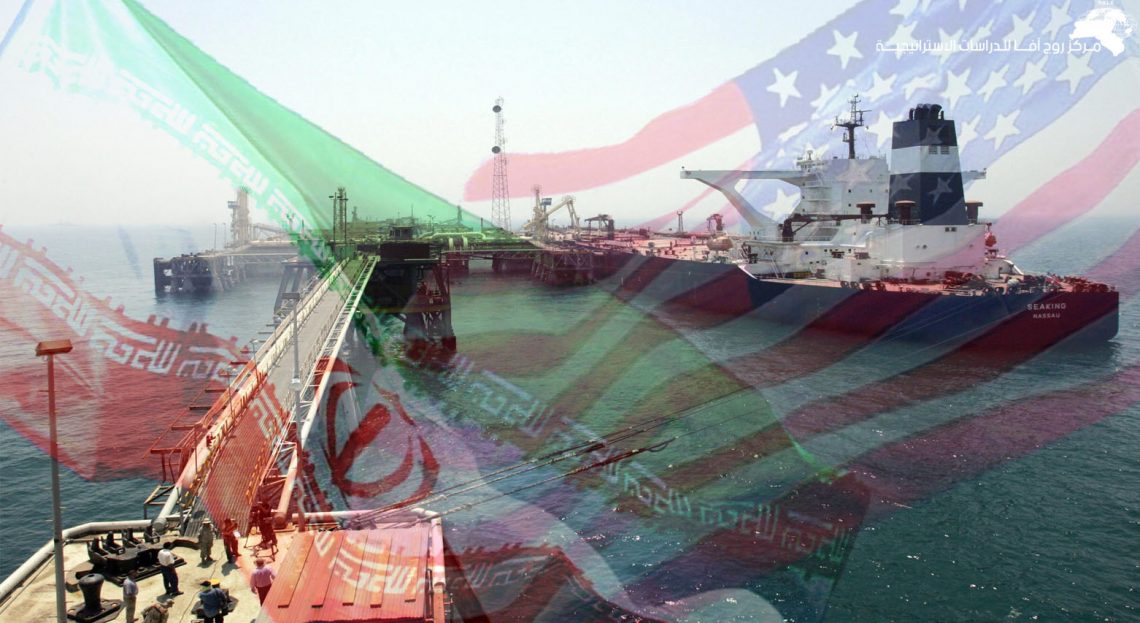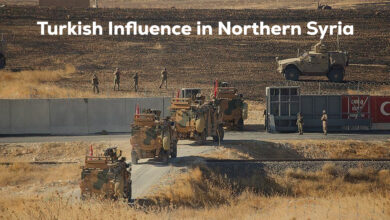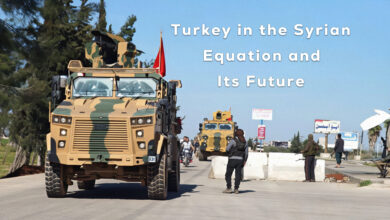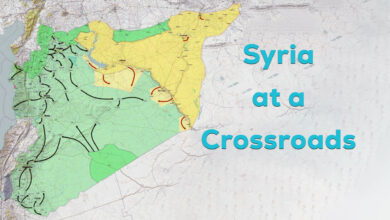Iranian Crisis and US Goals

America has drawn opposition from regional forces with regards to its recent geopolitical strategy, specifically, the withdrawal from the Iran nuclear deal, the increase of sanctions against Iran, and the end of tolerance for some states which had been importing Iranian oil.
US has toughening its stance towards the countries which are trying to reverse these sanctions and buy Iran’s oil.
Iran’s reaction to these decisions has also been rigid, and has declared that if the international forces do not fulfill their commitments, it would resume nuclear operations, take the Strait of Hurmuz and attack the Arab states of the Persian Gulf. The Gulf states, in turn, have requested that the US play a major role against the Iranian threats.
The US has recognized that in order to counteract Iran and further its agenda, it needs to secure its presence in the Persian Gulf. To do this, it must control the Strait of Hurmuz, thereby increasing the impact of the sanctions on Iran and reducing Iranian pressure in the Persian Gulf.
Consequently, American aircraft carrier “Abraham Lincoln” has been sent to the Persian Gulf. [We’ve said “Persian Gulf” at the end of each of the last three sentences.]
Definitely, the expansion of Iran in the Middle East, especially in Syria, is having a major affect on the US’ regional presence, as well as threatening the security of Israel. For this reason, America’s presence in the Gulf and the Israeli bombardment of Iranian bases and militis in Syria will play a large role in weakening and deterring Iran.
In analyzing American provocation and attacks on Iran, we can deduce the following objectives:
1-US wants pressure the Arab states (Gulf states, Egypt and Jordan) to join it in an Arab NATO.
2- US wants to legitimate and reinforce its sovereignty in the region. Furthermore, with its military presence in the Strait of Hurmuz, it wants to control one of the most important sea routes. 30% of worldwide oil exports cross the Strait. 85% of the crude oil passing here goes to Asia, particularly to Japan, India, China and South Korea. American control in the Strait will mean significant pressure for China.
3- The US seeks to protect the security of the Gulf from the threats of Iran and the wealth of the Gulf states. It wants to put the production of pipelines and oil tankers of Saudi Arabia to this end.
4- The US aims to restrict Iran’s oil exports, thereby applying massive pressure on Iran and forcing it to enter negotiations with America.
5- The US wants to be the main beneficiary of the economic advantages, such as oil, gas and the wealth of Iran.
6- US wants to debilitate the Iran’s presence in Syria and take control of the town of Bukemal.
The pressure, the siege, and the American economical sanctions over Iran have been carried out to achieve these goals. US does not want to fight a war against Iran, having learned from its previous experiences in Afghanistan and Iraq that the flame of such a war might set fire to the whole region, and furthermore, that the US might not be able to stop this war, a war that could benefit its enemies, Russia and China. In addition, it would cause the price of oil to rise dramatically, which would place a lot of pressure on the US. Altogether, the purpose of the US gathering its forces in the Persian Gulf and extending the crisis is merely to prevent Iran from exporting its oil and to exert pressure on Iran so that it must change its disposition, make concessions and negotiate.
The International Community, however, rejects military attacks due to the risk of international war, and is exerting intense pressure on Iran, which is driving Iran to a choice between two possibilities:
1- Giving in and accepting American demands, whether clearly or covertly; or
2- Facing the Americans and resisting the siege, penalties and sanctions. This would lead to the collapse of the Iranian economy, which could give rise to mass mobilizations and uprisings that could – like the regime of Reza Shah Pahlav before – overthrow the Islamic Republic.




